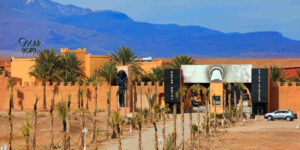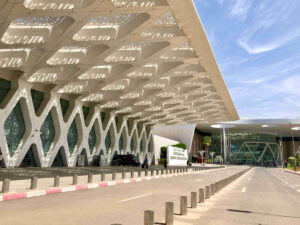You can come to Morocco for its enchanting medinas, for its paradisiacal beaches, for the magnetism of the desert dunes… and for many other attractions. And among them, to the surprise of many, are also the archaeological sites of Morocco. Although there are not as many as in other countries, those that can be visited have a special charm. And fortunately for those who are interested in the subject, there is still much to discover, as archaeological campaigns are ongoing and are expected to continue to bear fruit.
Volubilis, the great Roman city
If we talk about an archaeological site in Morocco, the name that comes to everyone’s mind is Volubilis. Located about 20 km from Meknes, it was the main city of the Roman province of Mauritania Tingitana, which covered a large portion of territory in the north of present-day Morocco. It has been declared a World Heritage Site by UNESCO due to its good state of preservation, as can be seen in a visit to its grounds, which is highly recommended.
A walk here will take you through cobblestone streets, arches that are still standing, some of which are of the most symbolic (such as the Triumphal Arch, in honor of Caracalla), mosaics featuring Bacchus, Ariadne or nymphs… and much more. It is known that this place had already been populated by the Carthaginians in the third century BC, but its period of splendor came after its annexation to the Roman Empire in the first century.
After the Arab conquest, it maintained its importance, as it was in fact the first capital of the Idrisid kingdom of Fez. But centuries later it experienced a long period of decadence, topped by the Lisbon earthquake (1755) that was felt here, causing the collapse of many structures. Its ashlars were later used in buildings in nearby Meknes.
Chellah: Roman and Marinid
Also from the Roman period is mainly the site of Chellah, very close to the urban centers of Rabat and Salé. Known in antiquity as Sala or Sala Colonia (from which the present name of Salé is derived), it was closely linked to the Bou Regreg river, at a time when this waterway was much more abundant and was a major commercial gateway to the southernmost Atlantic Ocean.
However, to this Roman attraction of the site is added here another interesting and visible ingredient to the tourist’s eyes: its use during the Merinid or Benimerin period, already in medieval times (XIII-XV centuries). In fact, this site is known as the Merinid (or Benimerin) necropolis, as this was the place chosen by the monarchs of that dynasty for the burial of their members.
As it is a very evocative and suggestive place, Jazz in Chellah, one of the most interesting jazz festivals in Morocco, is held in the spring among the ruins of this site.
Lixus: a legendary factory
We close this tour of the best archaeological sites in Morocco in Lixus, located about 7 km from the city of Larache and, therefore, along the northern Atlantic coast. Although the structures are not as monumental as those of Volubilis, it is a very interesting place to learn about daily life in ancient times.
Carthaginian remains have been identified, but perhaps most interesting of all are its salting workshops, which was highly appreciated during Roman times throughout the Empire. In addition, you can see the remains of an amphitheater and even a mosaic depicting Neptune, god of the sea, as this place depended on him for the export of salted fish.
And to add an additional point of interest, it is here that many experts have located the mythical Garden of the Hesperides, where Hercules had to fulfill one of his 12 labors: the gathering of the golden apples.



